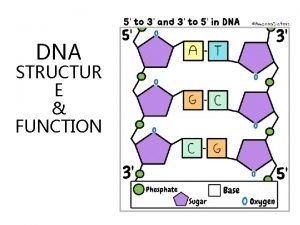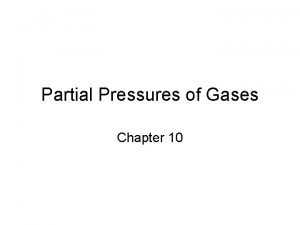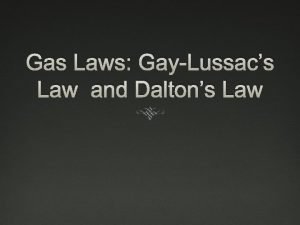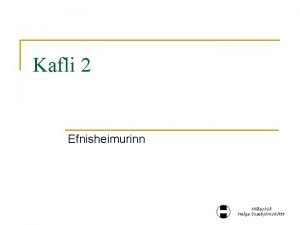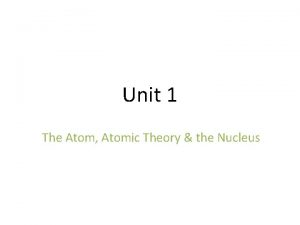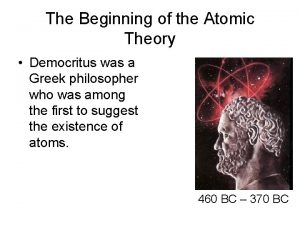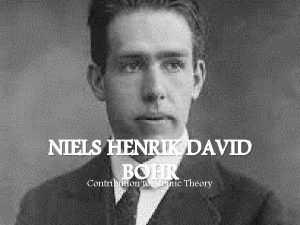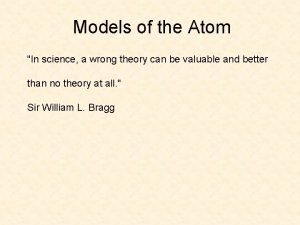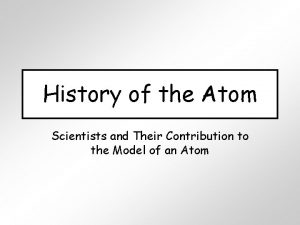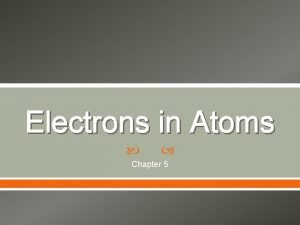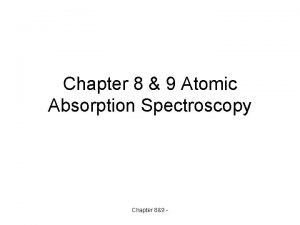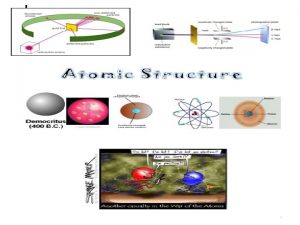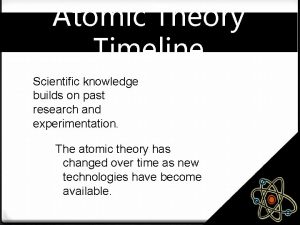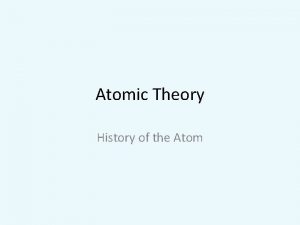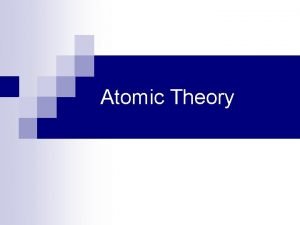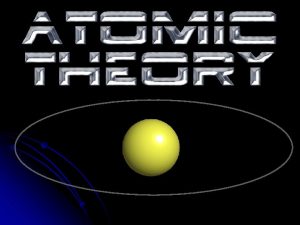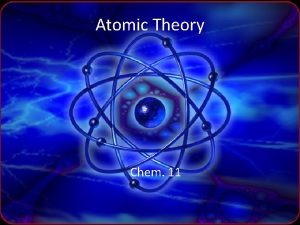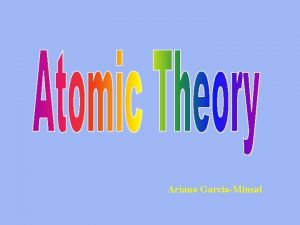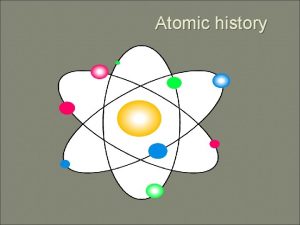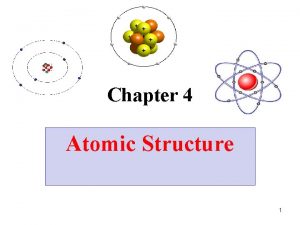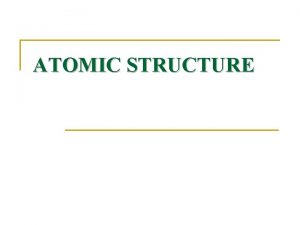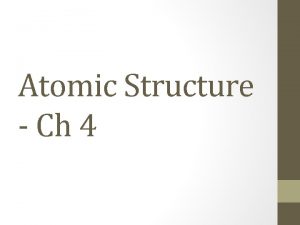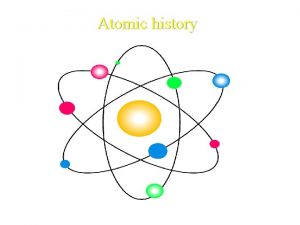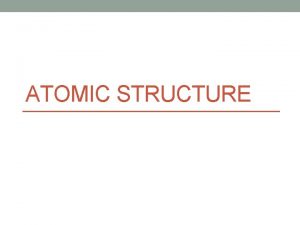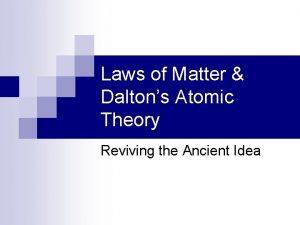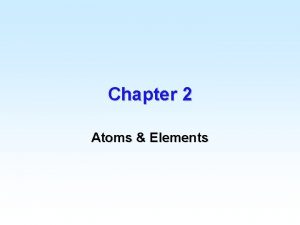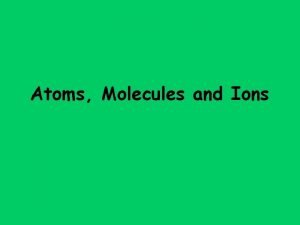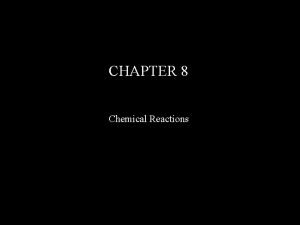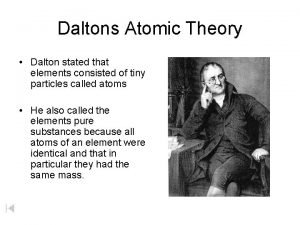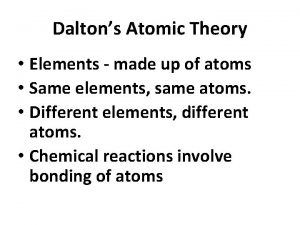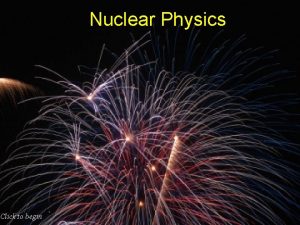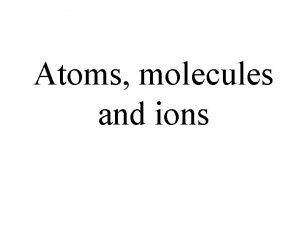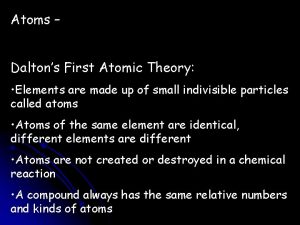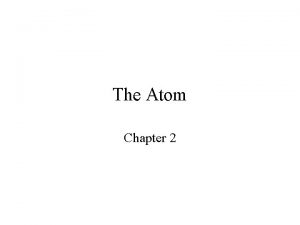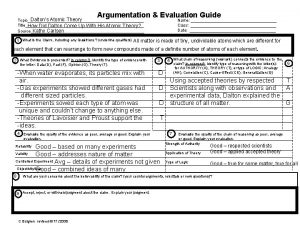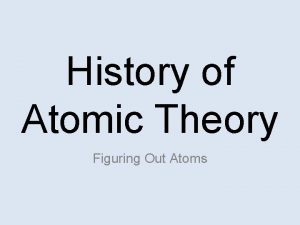ATOMIC STRUCTUR E N 5 DALTONS ATOMIC THEORY


























- Slides: 26

ATOMIC STRUCTUR E N 5

DALTON’S ATOMIC THEORY (1808) John Dalton 1)All matter is composed of extremely small particles called atoms

DALTON’S ATOMIC THEORY (1808) 2) Atoms of a given John Dalton element are identical in size, mass, and other properties

DALTON’S ATOMIC THEORY (1808) John Dalton 3) Atoms of different elements differ in size, mass, and other properties

DALTON’S ATOMIC THEORY (1808) John Dalton 4) Atoms cannot be subdivided, created, or destroyed

DALTON’S ATOMIC THEORY (1808) John Dalton 5) Atoms of different elements combine in simple wholenumber ratios to form chemical compounds

DALTON’S ATOMIC THEORY (1808) John Dalton 6) In chemical reactions, atoms are combined, separated, or rearranged

MODERN ATOMIC THEORY 1) All matter is composed of atoms 2) Atoms cannot be subdivided, created, or destroyed in ordinary chemical reactions. However, these changes CAN occur in nuclear reactions! 3) Atoms of an element have a characteristic average mass which is unique to that element. 4) Atoms of any one element differ in properties from atoms of another

DISCOVERY OF THE ELECTRON In 1897, J. J. Thomson used a cathode ray tube to deduce the presence of a negatively charged particle. Cathode ray tubes pass electricity through a gas that is contained at a very low pressure.

CONCLUSIONS FROM THE STUDY OF THE ELECTRON 1) Cathode rays have identical properties regardless of the element used to produce them. All elements must contain identically charged electrons. 2) Atoms are neutral, so there must be positive particles in the atom to balance the negative charge of the electrons 3) Electrons have so little mass that atoms must contain other heavier particles that account for most of the mass

THOMSON’S ATOMIC MODEL Thomson believed that the electrons were like plums embedded in a positively charged “pudding, ” thus it was called the “plum pudding” model.


RUTHERFORD’S GOLD FOIL EXPERIMENT q Alpha ( ) particles are helium nuclei q Particles were fired at a thin sheet of gold foil q Particle hits on the detecting screen (film) are recorded

TRY IT YOURSELF! In the following pictures, there is a target hidden by a cloud. To figure out the shape of the target, we shot some beams into the cloud and recorded where the beams came out. Can you figure out the shape of the target?

THE ANSWERS Target #1 Target #2

RUTHERFORD’S FINDINGS 1) Most of the particles passed right through 2) A few particles were deflected 3) VERY FEW were greatly deflected CONCLUSIONS: q The nucleus is small q The nucleus is dense q The nucleus is positively charged




ATOMIC PARTICLES Particle Charge Mass # Location Electron -1 0 Electron cloud Proton +1 1 Nucleus Neutron 0 1 Nucleus

ATOMIC NUMBER The number of protons in the nucleus of each atom of that element. Element # of protons Atomic # (Z) Carbon 6 6 Phosphorus 15 15 Gold 79 79

MASS NUMBER The number of protons and neutrons in the nucleus of an isotope. + Mass # = p + n 0 Nuclide Oxygen - 18 Arsenic - 75 Phosphorus - 31 p+ n 0 e- Mass # 8 33 10 42 8 18 15 16 33 15 75 31

WHICH OF THE FOLLOWING DETERMINES THE IDENTITY OF AN ATOM? A. Number of protons B. Number of electrons C. Number of neutrons D. Total number of protons and neutrons E. Total number of protons and electrons

WHICH OF THE FOLLOWING DETERMINES THE IDENTITY OF AN ATOM? A. Number of protons B. Number of electrons C. Number of neutrons D. Total number of protons and neutrons E. Total number of protons and electrons

ISOTOPES Atoms of the same element having different masses due to varying numbers of neutrons. Isotope Protons Electrons Neutrons Nucleus Hydrogen– 1 (protium) 1 1 0 Hydrogen-2 (deuterium) 1 1 1 Hydrogen-3 (tritium) 1 1 2

AVERAGE ATOMIC MASSES The average of all the naturally occurring isotopes of that element. Composition of the nucleus Isotope Symbol % in nature Carbon-12 12 C 6 protons 6 neutrons 98. 89% Carbon-13 13 C 6 protons 7 neutrons 1. 11% Carbon-14 14 C 6 protons 8 neutrons <0. 01% Carbon = 12. 011
 Dna structur
Dna structur Daltons gas law
Daltons gas law Dalton's gas law
Dalton's gas law Efnisheimurinn kafli 2
Efnisheimurinn kafli 2 John dalton's atomic model
John dalton's atomic model Daltons experiment
Daltons experiment Relative atomic mass of beryllium
Relative atomic mass of beryllium Periodic trends in properties of elements
Periodic trends in properties of elements Atomic radius trends on periodic table
Atomic radius trends on periodic table How to calculate abundance of isotopes
How to calculate abundance of isotopes Difference between atomic mass and atomic number
Difference between atomic mass and atomic number Atomic number vs atomic radius
Atomic number vs atomic radius Democritus diagram
Democritus diagramSir james chadwick atomic theory
 Democritus atomic theory
Democritus atomic theory Niels bohr drawing
Niels bohr drawing Erwin schrödinger atomic theory
Erwin schrödinger atomic theory Schrodinger atomic theory
Schrodinger atomic theory Atomic theory timeline
Atomic theory timeline Theory of atomic absorption spectroscopy
Theory of atomic absorption spectroscopy Democritus atomic theory
Democritus atomic theory Democritus atom model
Democritus atom model Plato atomic theory timeline
Plato atomic theory timeline Father of atomic theory
Father of atomic theory History of atomic models
History of atomic models Neils bohr
Neils bohr Atomic molecular theory
Atomic molecular theory
